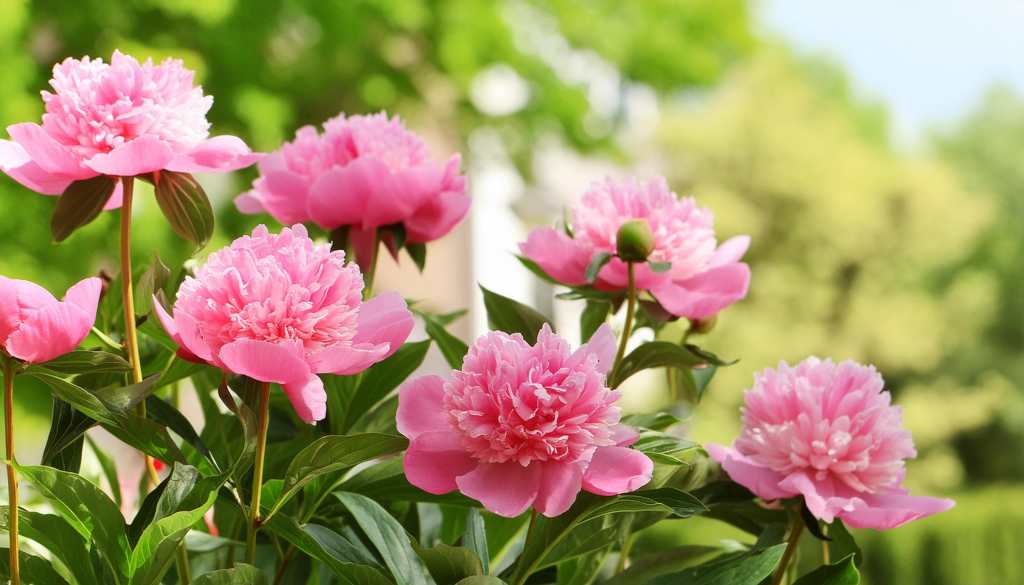Peonies, with their lush blooms and captivating fragrance, are a beloved addition to any garden. However, timing is crucial when it comes to planting these perennials to ensure their optimal growth and flowering. This seasonal guide will delve into the best times to plant peonies, considering various factors that influence their success.
Understanding Times to Planting Peonies
Peonies are best planted when they are dormant, which typically falls during the fall or early spring. Planting during these periods allows the roots to establish themselves before the extreme temperatures of summer or winter arrive. Let’s explore these seasons in more detail:
Fall Planting (September to October):
Fall is widely considered the ideal time to plant peonies in most regions. The cooler temperatures and increased rainfall provide favorable conditions for root development. Planting in the fall allows peonies to establish a strong root system before the ground freezes, ensuring a vibrant display of blooms the following spring.
Spring Planting (March to April):
While fall is preferred, spring planting can also be successful, especially in areas with mild winters. However, it’s important to plant peonies as early as possible in the spring, before new growth emerges. This gives the roots time to settle before the heat of summer arrives. Similarly, knowing when do you plant roses can be crucial for their successful growth. For more details, you can visit https://aliceswonderlandnursery.com/plants/when-to-plant-roses/.
Factors Influencing Planting Time
While the general guidelines suggest fall or early spring planting, several factors can influence the ideal planting time for peonies in your specific location:
- Climate:
- Cold Climates: In regions with harsh winters, fall planting is recommended to give peonies ample time to establish roots before the ground freezes.
- Mild Climates: Spring planting can be successful in areas with mild winters, but early planting is crucial.
- Peony Type:
- Herbaceous Peonies: These peonies die back to the ground each winter and are best planted in the fall.
- Tree Peonies: While fall is still preferred, tree peonies can sometimes be planted in the early spring due to their woody stems.
- Bare Root vs. Potted Peonies:
- Bare Root Peonies: These peonies are typically planted in the fall, as they need time to establish roots before winter.
- Potted Peonies: These can be planted in the spring or fall, as they already have an established root system.
Planting Peonies: Step-by-Step Guide
Regardless of the season, follow these steps for successful peony planting:
- Choose a Location: Select a sunny spot with well-draining soil. Peonies thrive in full sun but can tolerate some afternoon shade.
- Prepare the Soil: Amend the soil with organic matter like compost to improve drainage and fertility.
- Dig a Hole: Dig a hole wide and deep enough to accommodate the peony roots without bending or crowding them.
- Plant the Peony: Place the peony in the hole, ensuring the eyes (growth buds) are facing upward and are 1-2 inches below the soil surface.
- Backfill and Water: Fill the hole with soil, gently firming it around the roots. Water thoroughly to settle the soil.
Caring for Newly Planted Peonies
After planting, water your peonies regularly, especially during dry spells. Apply a layer of mulch around the base of the plant to retain moisture and suppress weeds. Avoid fertilizing newly planted peonies, as this can burn their delicate roots.
In Conclusion
Planting peonies at the right time is essential for their long-term health and blooming potential. While fall is generally considered the optimal time for planting in most regions, spring planting can also be successful under certain conditions. Consider your climate, peony type, and other factors to determine the best time to plant peonies in your garden. With proper care and attention to planting peonies, your peonies will reward you with their stunning beauty for years to come.
I hope this guide has been helpful! Please let me know if you have any other questions.






